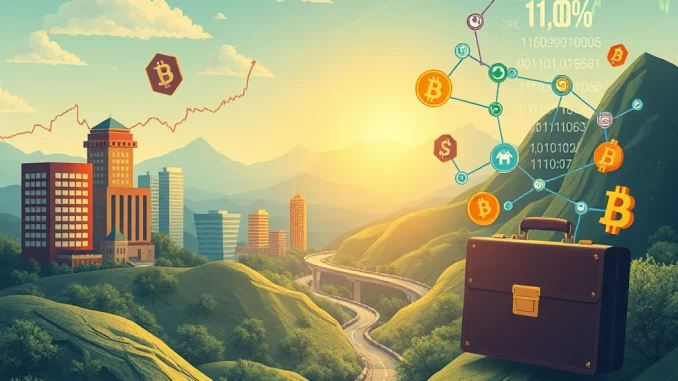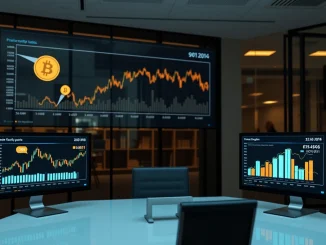
Get ready for a financial transformation. A major voice from the heart of traditional finance is speaking out, and their message is clear: the future involves digital assets.
At the recent Coinbase 2025 State of Crypto Summit in New York, Rob Goldstein, the Chief Operating Officer of investment giant BlackRock, shared a powerful perspective. He stated that the integration of traditional capital markets with digital assets is poised to play a significant, even massive, role in shaping the financial landscape over the next ten years. This isn’t just a casual observation; it’s a statement from a leader at one of the world’s largest asset managers, signaling a clear direction for the industry.
Why Digital Assets Are Reshaping Traditional Finance
The convergence Goldstein speaks of isn’t theoretical; it’s already underway. The increasing interest from institutions in Digital Assets stems from several potential advantages they offer compared to traditional structures. These include:
- **Increased Efficiency:** Digital assets, often built on blockchain technology, can facilitate faster and cheaper transactions by reducing intermediaries.
- **Enhanced Liquidity:** Tokenization can break down large, illiquid assets (like real estate or private equity) into smaller, tradable units, potentially increasing market access and liquidity.
- **Greater Transparency:** Blockchain’s distributed ledger can offer a transparent and immutable record of ownership and transactions.
- **Wider Accessibility:** Digital platforms can potentially lower barriers to entry for certain types of investments.
BlackRock’s own moves, such as launching a successful Bitcoin ETF, underscore this shift. They are actively participating in bridging the gap between Traditional Finance and the crypto world, validating the asset class for a broader institutional audience.
How Crypto Integration is Taking Shape
The path towards full Crypto Integration within the existing financial system involves multiple avenues. It’s not just about buying and selling cryptocurrencies. Consider these developments:
- **Tokenization of Assets:** Representing real-world assets (stocks, bonds, commodities, art) as digital tokens on a blockchain.
- **Institutional Investment Products:** The rise of regulated investment vehicles like Bitcoin and Ethereum ETFs provides traditional investors with familiar ways to gain exposure.
- **Blockchain for Infrastructure:** Exploring how distributed ledger technology can improve clearing, settlement, and other back-office functions in Traditional Finance.
- **Digital Currencies:** The potential for central bank digital currencies (CBDCs) and stablecoins to interact with existing payment systems.
Goldstein’s comments from the Coinbase summit highlight that major players like BlackRock see these trends not as isolated experiments but as fundamental changes that will redefine the Financial Landscape.
Navigating the Evolving Financial Landscape
While the opportunities are significant, integrating Digital Assets into Traditional Finance also presents challenges. Regulatory clarity remains a key hurdle globally. Security concerns, scalability issues, and the need for investor education are also critical factors that need addressing as this integration accelerates.
However, the momentum is building. When leaders from firms like BlackRock publicly endorse this convergence, it signals a shift in mindset at the highest levels. It suggests that the infrastructure, regulatory frameworks, and market products necessary for this integration are actively being developed and considered.
The next decade promises to be a period of significant evolution for global finance. The lines between what we’ve historically called Traditional Finance and the burgeoning world of Digital Assets will likely blur considerably. This integration, championed by influential figures like Rob Goldstein, has the potential to create more efficient, accessible, and innovative financial markets for everyone.
The Bottom Line: What BlackRock’s View Means
Rob Goldstein’s statement is more than just news; it’s a confirmation of a major industry trend from a powerful insider. It reinforces the idea that Digital Assets are not a fleeting phenomenon but a foundational element of the future Financial Landscape. For investors, institutions, and policymakers alike, understanding and adapting to this accelerating Crypto Integration will be crucial in the years ahead.
The vision shared at the Coinbase summit points towards a future where traditional and digital financial systems operate in concert, unlocking new possibilities and redefining how value is stored, transferred, and managed globally.



